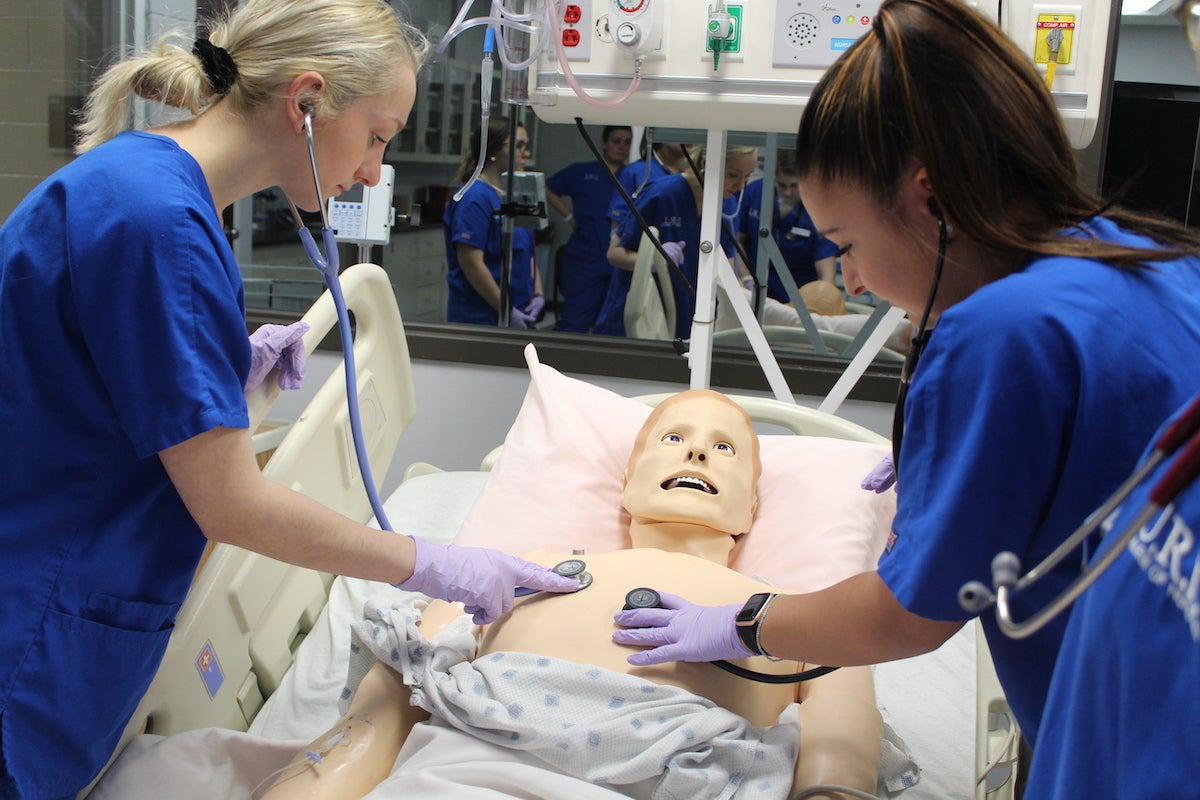Advanced sim labs in the College of Nursing include lifelike mannequins that mimic actual patients
By Allie Shinskey
University of Rhode Island College of Nursing students get the opportunity to work directly with patients, assessing their condition, diagnosing a plan of action and applying the prescribed treatment themselves, all without the risk of making a mistake that could further inflict injury.
That’s because while their “patients” can speak, bleed, sweat and cry, they can’t actually feel anything. And repairing even a significant mistake that could threaten a patient’s well-being is as easy as hitting the reset button.
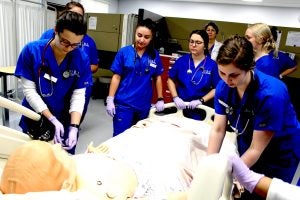 The College of Nursing’s advanced simulation labs offer students the chance to practice their skills in a non-discouraging way on lifelike mannequins that mimic an actual patient experience. During simulations, the mannequins can show multiple vital signs that students must analyze, according to Simulation Coordinator Jessica Skaltsis, who directs the simulation labs at the Nursing Education Center in Providence. Students then have to administer the treatment option they think is necessary.
The College of Nursing’s advanced simulation labs offer students the chance to practice their skills in a non-discouraging way on lifelike mannequins that mimic an actual patient experience. During simulations, the mannequins can show multiple vital signs that students must analyze, according to Simulation Coordinator Jessica Skaltsis, who directs the simulation labs at the Nursing Education Center in Providence. Students then have to administer the treatment option they think is necessary.
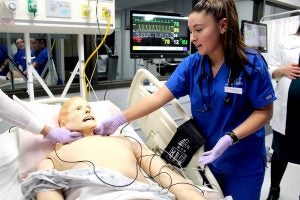 “It’s their job to listen to their lung sounds, to listen to their heart, assess them and figure out what they think is going on, just like a regular patient,” Skaltsis said, noting nursing students participate in this training usually during their sophomore and junior years. “We try to create as real a human as possible for them to work with during the simulations.”
“It’s their job to listen to their lung sounds, to listen to their heart, assess them and figure out what they think is going on, just like a regular patient,” Skaltsis said, noting nursing students participate in this training usually during their sophomore and junior years. “We try to create as real a human as possible for them to work with during the simulations.”
The lab is set up like a hospital room, with all the equipment one would expect to find. One-way glass separates the patient room from an observation area, where faculty members and fellow students observe the interaction. Professors give the students immediate feedback on their work after participating in the scenarios.
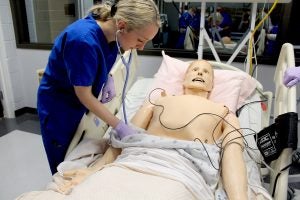 “Simulation is really a way to take what you’ve learned and apply it to a patient,” she said. “It’s just like when students go out to clinical sites and they take care of patients in real life. We do the same thing here but we’re able to create any scenario we want.”
“Simulation is really a way to take what you’ve learned and apply it to a patient,” she said. “It’s just like when students go out to clinical sites and they take care of patients in real life. We do the same thing here but we’re able to create any scenario we want.”
While working with a live patient offers the best practice, that is not always practical with nursing students, who can be limited in what they’re allowed to do in an actual clinic. In the lab, students are free to practice their care without the risk of making mistakes that could potentially harm an actual patient.
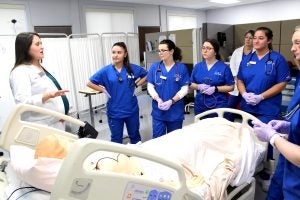 “At a clinical site, they may not see a lot of the disease processes that are out there because they’re limited to whatever patient they have for the day,” said Ashley Viveiros, a nurse lecturer who also uses sim labs for her classes. “You’re always following a nurse or having to do things under the supervision of a nurse or the faculty member who’s with them at the clinical site. In the sim lab, they are the nurse.”
“At a clinical site, they may not see a lot of the disease processes that are out there because they’re limited to whatever patient they have for the day,” said Ashley Viveiros, a nurse lecturer who also uses sim labs for her classes. “You’re always following a nurse or having to do things under the supervision of a nurse or the faculty member who’s with them at the clinical site. In the sim lab, they are the nurse.”
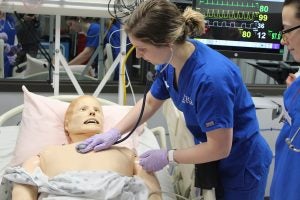 Other benefits students get from simulation training include learning critical thinking skills, how to use their clinical judgment and how to work as a team. Perhaps most importantly, students get a sense of the true role of the nurse.
Other benefits students get from simulation training include learning critical thinking skills, how to use their clinical judgment and how to work as a team. Perhaps most importantly, students get a sense of the true role of the nurse.
“The need to understand that role is the student feedback I hear the most,” Viveiros said. “They can be confused about the role of the nurse at first because you don’t really understand it until you do it.”
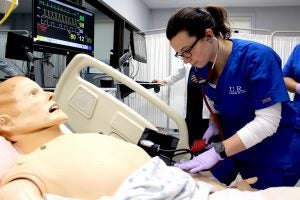 While the simulation labs have been around for more than a decade, many aspects of the training have changed for the better compared to when she was a student. Those changes mostly have to do with the faculty and staff interaction with the students during training, specifically with the pre-briefing and debriefing process.
While the simulation labs have been around for more than a decade, many aspects of the training have changed for the better compared to when she was a student. Those changes mostly have to do with the faculty and staff interaction with the students during training, specifically with the pre-briefing and debriefing process.
“Students aren’t penalized for making mistakes. The training is simply a learning tool, and there is more emphasis on feedback,” Skaltsis said. “I think we’ve really come a long way.”
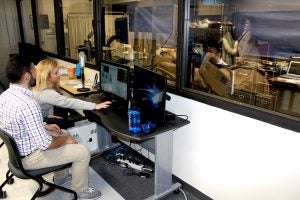 Simulation labs are available to nursing students at the Nursing Education Center in Providence.
Simulation labs are available to nursing students at the Nursing Education Center in Providence.
Allie Shinskey is a sophomore journalism major and intern with the Academic Health Collaborative.

